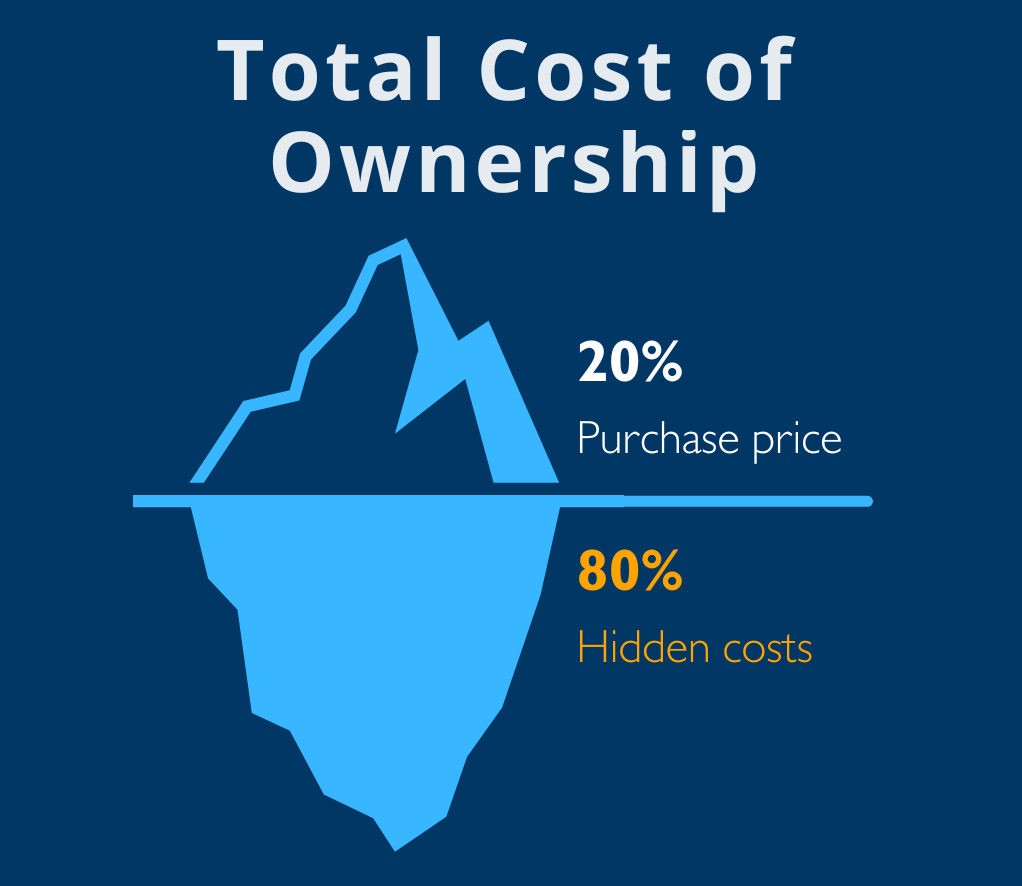In this article we will share a few insights about the Total Cost of Ownership.

Background
Users often look at the price of a product as a major factor, indeed the major factor in the purchase decision process. Examined in isolation, it’s obviously important, particularly when putting together the purchase.
In the open source world, it’s free is often argued as the reason to use a particular product. In the commercial world, there are often products available that are extremely inexpensive or free that can (or at least look like they can) do the job.
But it’s really not that simple. The initial price is just the beginning of your journey with a product. Unless it’s a “set and forget” kind of thing, you’re going to spend time with it. And for most people, time is money.
The Price is Right? Maybe Not!
Suppose you purchase a plugin host for $30 and suppose also that you earn $30/hour from your regular work, whatever that is. Then your first 8 hour day working with that $30 plugin host will cost you $270 (8×30 + the price of the product) in lost earnings. Two weeks of work will cost you $2,430.
Now suppose your product costs $150. Your first 8 hour day will cost you $390 and two weeks of work will cost you $2,550, a difference of about 5%.
It’s clear that as more time is spent, the contribution to the total cost of that initial purchase decreases significantly and it’s not long before that initial cost becomes negligible. The more your own time is worth, the faster this happens.
Spend less time
But wait a moment. As well as more capabilities, one of the reasons you may be considering a more expensive product is because it lets you work more efficiently and in that case your Total Cost of Ownership will go down significantly. For example, the more expensive product might let you complete your work in half the time of the cheaper product which means you actual cost is just 150 + 1,200 or a total of $1,350, a much smaller price.
In the case of Gig Performer, for example, this efficiency is not speculative. For example, the developer of the well known Narfsounds line of sound patches said this publicly, “I finished a sound pack of 16 songs in less than half the time it would take me to complete a pack on any other platform so that to me is a testament on how easy it is to learn and use.”
Cost of failure
Another factor worth considering is the price of failure. In the context of music performance, consider the consequences of your system failing, either at a performance or at a recording session if you happen to be a session musician. In both cases, immediate lost earnings are a factor but there’s also the risk of losing future earnings if people who hire you become concerned that you might not be able to deliver.
While the risk may be very small, particularly if you’re using reliable modern equipment, to reduce this risk, customers who depend on their tools to make their living will probably opt for a redundant system, e.g, a second computer and a second audio interface. While worthwhile, those are also significant additional costs which again reduces significantly the cost of that initial software package. Professional players will probably also want to carry insurance, yet another ongoing cost.
Beyond product-related costs
Of course, beyond the initial price of the software, your time and perhaps redundant hardware, there are other considerations. For example, the software you want to use may require you to also update your OS or worse, it may require you to purchase a new computer, a very significant additional cost of ownership. Some operating systems require more of your attention to address quirks and so that’s more time and therefore more money.
Some of you may say, “well, I’m retired so my time isn’t worth any money”. That might be the case but time is still a very precious commodity, even more so for those of us who are older and if there’s no direct money equivalent, there’s always the lost opportunity cost. Perhaps you’d rather be playing your setlist rather than configuring it. Or maybe just taking a walk. Whatever it is, the quicker you can do with one tool, the more time you have available for other activities. That’s worth a lot!
For a deeper analysis of TCO, please see this Wikipedia article – https://en.wikipedia.org/wiki/Total_cost_of_ownership
If you have any questions or want to share your feedback, please visit this Community thread.
.
Related topics:
– Gig Performer as an ultimate enhancer
– Why use a computer with Gig Performer rather than hardware
– Why a graphic interface is superior to the channel strip model

